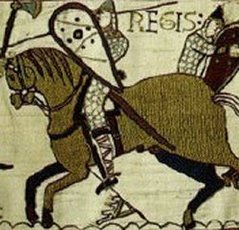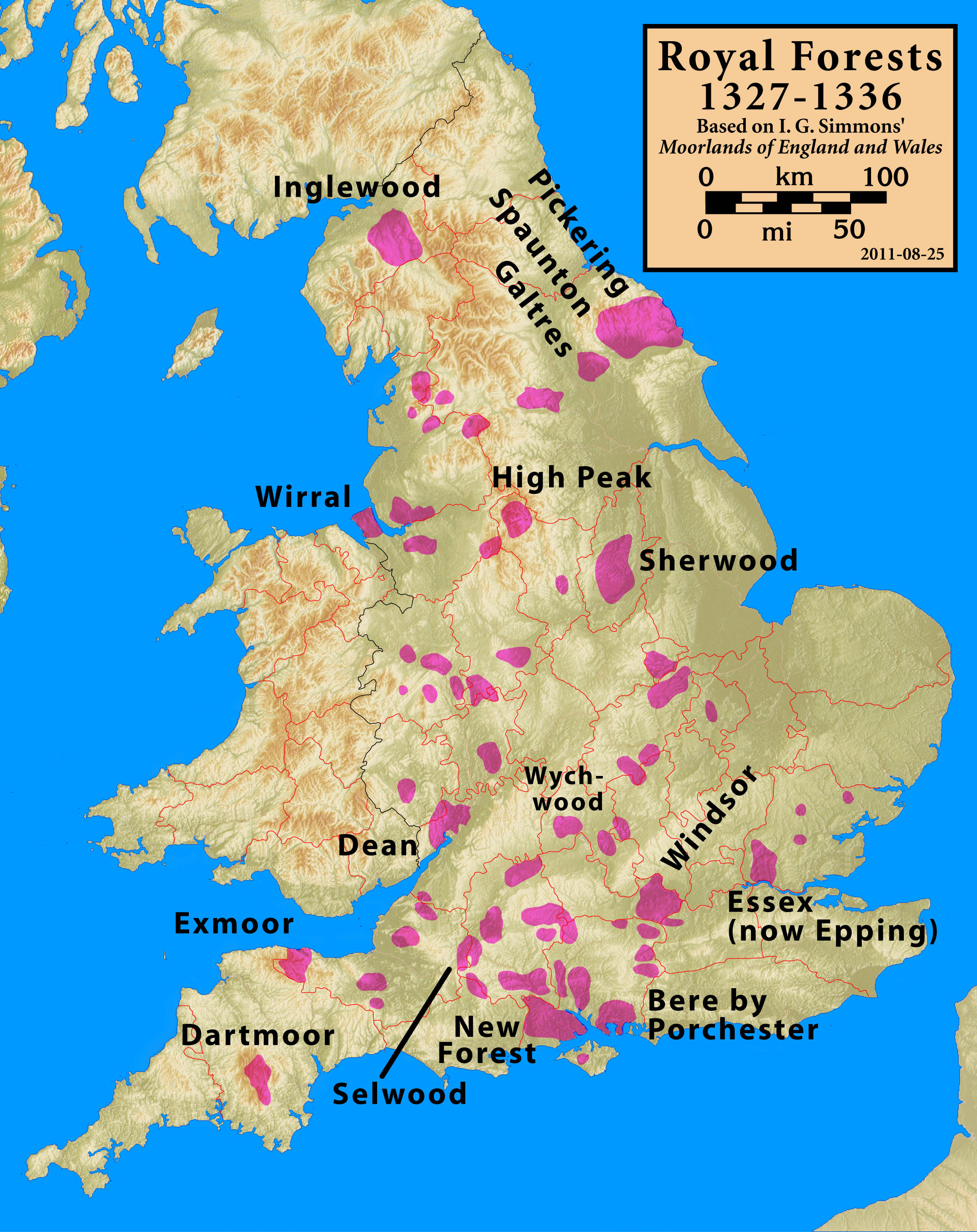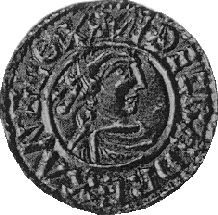|
Battle Of Cynwit
The Battle of Cynwit or Countisbury Hill took place between West Saxons and Vikings in 878. The location of the fortress the battle is named for is not known with certainty but probably was at Countisbury Hill or Wind Hill, near Countisbury, Devon. A possible alternative site for the siege and battle is Cannington Camp in the Parrett estuary near Combwich. Prelude The Viking army was said to have been led by Ubba, brother of Ivar the Boneless and Halfdan Ragnarsson, and sailed from Dyfed (where they had overwintered) to land on the coast at Countisbury with 23 ships and 1200 men. On landing, the Viking army discovered that the West Saxons had taken refuge in a stronghold at "Cynuit", possibly Countisbury. According to the 10th century chronicler Æthelweard, the West Saxons were led by Odda, the ealdorman of Devon. The Vikings perceived that the stronghold was unprepared for battle and decided to besiege it, as it did not seem to have any food or water supply. Battle Accord ... [...More Info...] [...Related Items...] OR: [Wikipedia] [Google] [Baidu] |
Viking Activity In The British Isles
Viking activity in the British Isles occurred during the Early Middle Ages, the 8th to the 11th centuries, when History of Scandinavia, Scandinavians travelled to the British Isles to raid, conquer, settle and trade. They are generally referred to as Vikings,#Ric91, Richards 1991. p. 9. but some scholars debate whether the term Viking represented all Scandinavian settlers or just those who used violence.#Gra98, Graham-Campbell and Batey 1998. p. 3. At the start of the early medieval period, Scandinavian kingdoms had developed trade links reaching as far as southern Europe and the Mediterranean, giving them access to foreign imports, such as silver, gold, bronze, and spices. These trade links also extended westwards into Ireland and Britain.#Bla99, Blair 2003. pp. 56–57. In the last decade of the eighth century, Viking raiders sacked several Christian monasteries in northern Britain, and over the next three centuries they launched increasingly large scale invasions and settled i ... [...More Info...] [...Related Items...] OR: [Wikipedia] [Google] [Baidu] |
Raven Banner
The raven banner ( ; ) was a flag, possibly totemic in nature, flown by various Viking chieftains and other Scandinavian rulers during the 9th, 10th and 11th centuries. Period description simply describes it as a war banner with a raven mark on it, although no complete visual description or depiction of the raven banner is known from the time. Norse and European period artwork, however, depicts war banners as roughly triangular, with a rounded outside edge on which there hung a series of tabs or tassels, some with a resemblance to ornately carved "weather-vanes" used aboard Viking longships, indicating that some raven banners may have been constructed in a similar manner. Scholars conjecture that the raven flag was a symbol of Odin, who was often depicted accompanied by two ravens named Huginn and Muninn. Its intent may have been to strike fear in one's enemies by invoking the power of Odin. As one scholar notes regarding encounters between the Christian Anglo-Saxons and the inv ... [...More Info...] [...Related Items...] OR: [Wikipedia] [Google] [Baidu] |
Battles Involving The Vikings
A battle is an occurrence of combat in warfare between opposing military units of any number or size. A war usually consists of multiple battles. In general, a battle is a military engagement that is well defined in duration, area, and force commitment. An engagement with only limited commitment between the forces and without decisive results is sometimes called a skirmish. The word "battle" can also be used infrequently to refer to an entire operational campaign, although this usage greatly diverges from its conventional or customary meaning. Generally, the word "battle" is used for such campaigns if referring to a protracted combat encounter in which either one or both of the combatants had the same methods, resources, and strategic objectives throughout the encounter. Some prominent examples of this would be the Battle of the Atlantic, Battle of Britain, and the Battle of France, all in World War II. Wars and military campaigns are guided by military strategy, whereas ... [...More Info...] [...Related Items...] OR: [Wikipedia] [Google] [Baidu] |
Battles Involving Wessex
A battle is an occurrence of combat in warfare between opposing military units of any number or size. A war usually consists of multiple battles. In general, a battle is a military engagement that is well defined in duration, area, and force commitment. An engagement with only limited commitment between the forces and without decisive results is sometimes called a skirmish. The word "battle" can also be used infrequently to refer to an entire operational campaign, although this usage greatly diverges from its conventional or customary meaning. Generally, the word "battle" is used for such campaigns if referring to a protracted combat encounter in which either one or both of the combatants had the same methods, resources, and strategic objectives throughout the encounter. Some prominent examples of this would be the Battle of the Atlantic, Battle of Britain, and the Battle of France, all in World War II. Wars and military campaigns are guided by military strategy, whereas battl ... [...More Info...] [...Related Items...] OR: [Wikipedia] [Google] [Baidu] |
870s Conflicts
{{Numberdis ...
87 may refer to: * 87 (number) * one of the years 87 BC, AD 87, 1987, 2087 * Atomic number 87, francium * Intel 8087, a floating-point coprocessor * 87; Common gasoline rating * 87 Sylvia, a large asteroid * Tatra 87, a luxury car See also * * List of highways numbered All lists of highways beginning with a number. {{List of highways numbered index Lists of transport lists ... [...More Info...] [...Related Items...] OR: [Wikipedia] [Google] [Baidu] |
National Trust
The National Trust () is a heritage and nature conservation charity and membership organisation in England, Wales and Northern Ireland. The Trust was founded in 1895 by Octavia Hill, Sir Robert Hunter and Hardwicke Rawnsley to "promote the permanent preservation for the benefit of the Nation of lands and tenements (including buildings) of beauty or historic interest". It has since been given statutory powers, starting with the National Trust Act 1907. Historically, the Trust acquired land by gift and sometimes by public subscription and appeal, but after World War II the loss of country houses resulted in many such properties being acquired either by gift from the former owners or through the National Land Fund. One of the largest landowners in the United Kingdom, the Trust owns almost of land and of coast. Its properties include more than 500 historic houses, castles, archaeological and industrial monuments, gardens, parks, and nature reserves. Most properties are open ... [...More Info...] [...Related Items...] OR: [Wikipedia] [Google] [Baidu] |
Exmoor National Park
Exmoor () is loosely defined as an area of hilly open moorland in west Somerset and north Devon in South West England. It is named after the River Exe, the source of which is situated in the centre of the area, two miles north-west of Simonsbath. Exmoor is more precisely defined as the area of the former ancient royal hunting forest, also called Exmoor, which was officially surveyed 1815–1818 as in extent. The moor has given its name to a National Park, which includes the Brendon Hills, the East Lyn Valley, the Vale of Porlock and of the Bristol Channel coast. The total area of the Exmoor National Park is , of which 71% is in Somerset and 29% in Devon. The upland area is underlain by sedimentary rocks dating from the Devonian and early Carboniferous periods with Triassic and Jurassic age rocks on lower slopes. Where these reach the coast, cliffs are formed which are cut with ravines and waterfalls. It was recognised as a heritage coast in 1991. The highest point on Exmoor ... [...More Info...] [...Related Items...] OR: [Wikipedia] [Google] [Baidu] |
The Last Kingdom
''The Last Kingdom'' is the first historical novel in '' The Saxon Stories'' by Bernard Cornwell, published in 2004. This story introduces Uhtred of Bebbanburg, a Saxon noble who is kidnapped by Danish Vikings as a young child and is assimilated into their culture, religion and language before a series of events lead him into the service of King Alfred of Wessex and his participation in multiple battles, including the notable Battle of Cynwit before the book's conclusion. Plot summary At nine years old Osbert is the second son of Ealdorman Uhtred, Lord of Bebbanburg in Northumbria during the year 866 AD. Danes arrive on Bebbanburg's shores, and Ealdorman Uhtred's first son, also called Uhtred, is killed while scouting. Ealdorman Uhtred then renames Osbert as Uhtred, son of Uhtred. Ealdorman Uhtred, other local nobles and their raised army are killed during a disastrous attack on Danish-seized Eoferwic (York) the following year, with the younger 10 years old Uhtred being ... [...More Info...] [...Related Items...] OR: [Wikipedia] [Google] [Baidu] |
Battle Of Edington
The Battle of Edington or Battle of Ethandun was fought in May 878 between the West Saxon army of King Alfred the Great and the Great Heathen Army led by the Danish warlord Guthrum. The battle took place near Edington, Wiltshire, Edington in Wiltshire, where Alfred secured a decisive victory that halted the Viking advance into Wessex. The engagement followed a period of sustained Viking invasion of England, Danish incursions into Anglo-Saxon territory. In early 878, Guthrum launched a surprise attack on Chippenham, forcing Alfred into hiding in the marshes of Athelney. After rallying local forces, Alfred confronted and defeated Guthrum at Edington, then laid siege to the Viking position, compelling their surrender. Following the battle, Guthrum agreed to terms that included his baptism, withdrawal to East Anglia, and the establishment of peace through the Treaty of Wedmore. The outcome preserved Wessex as an independent kingdom and marked a turning point in the Viking wars, l ... [...More Info...] [...Related Items...] OR: [Wikipedia] [Google] [Baidu] |
Great Heathen Army
The Great Heathen Army, also known as the Viking Great Army,Hadley. "The Winter Camp of the Viking Great Army, AD 872–3, Torksey, Lincolnshire", ''Antiquaries Journal''. 96, pp. 23–67 was a coalition of Scandinavian warriors who invaded England in 865 AD. Since the late 8th century, the Vikings had been engaging in raids on centres of wealth, such as monasteries. The Great Heathen Army was much larger and aimed to conquer and occupy the four kingdoms of East Anglia, Northumbria, Mercia and Wessex. The name ''Great Heathen Army'' is derived from the '' Anglo-Saxon Chronicle''. The force was led by three of the five sons of the semi-legendary Ragnar Lodbrok, including Halfdan Ragnarsson, Ivar the Boneless and Ubba. The campaign of invasion and conquest against the Anglo-Saxon kingdoms lasted 14 years. Surviving sources give no firm indication of its numbers, but it was described as amongst the largest forces of its kind. The invaders initially landed in East Ang ... [...More Info...] [...Related Items...] OR: [Wikipedia] [Google] [Baidu] |
Somerset
Somerset ( , ), Archaism, archaically Somersetshire ( , , ) is a Ceremonial counties of England, ceremonial county in South West England. It is bordered by the Bristol Channel, Gloucestershire, and Bristol to the north, Wiltshire to the east, Dorset to the south-east, and Devon to the south-west. The largest settlement is the city of Bath, Somerset, Bath, and the county town is Taunton. Somerset is a predominantly rural county, especially to the south and west, with an area of and a population of 965,424. After Bath (101,557), the largest settlements are Weston-super-Mare (82,418), Taunton (60,479), and Yeovil (49,698). Wells, Somerset, Wells (12,000) is a city, the second-smallest by population in England. For Local government in England, local government purposes the county comprises three Unitary authorities of England, unitary authority areas: Bath and North East Somerset, North Somerset, and Somerset Council, Somerset. Bath and North East Somerset Council is a member of ... [...More Info...] [...Related Items...] OR: [Wikipedia] [Google] [Baidu] |
Kingdom Of Wessex
The Kingdom of the West Saxons, also known as the Kingdom of Wessex, was an Anglo-Saxon kingdom in the south of Great Britain, from around 519 until Alfred the Great declared himself as King of the Anglo-Saxons in 886. The Anglo-Saxons believed that Wessex was founded by Cerdic and Cynric of the Gewisse, though this is considered by some to be a legend. The two main sources for the history of Wessex are the West Saxon Genealogical Regnal List and the ''Anglo-Saxon Chronicle'' (the latter of which drew on and adapted an early version of the List), which sometimes conflict. Wessex became a Christian kingdom after Cenwalh () was baptised and was expanded under his rule. Cædwalla later conquered Sussex, Kent and the Isle of Wight. His successor, Ine (), issued one of the oldest surviving English law codes and established a second West Saxon bishopric. The throne subsequently passed to a series of kings with unknown genealogies. During the 8th century, as the hegemony of ... [...More Info...] [...Related Items...] OR: [Wikipedia] [Google] [Baidu] |







